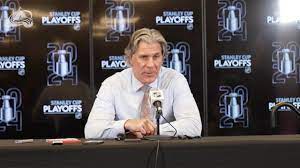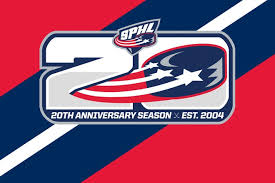ECHL Stars Depart Amid Coaching Change.
In a surprising turn of events, the East Coast Hockey League (ECHL) is facing significant upheaval as two of its star players are set to leave their respective teams. The departure of these key athletes is closely linked to a recent change in the coaching staff, stirring up a mix of disappointment and uncertainty among fans and stakeholders.
The ECHL, known for its competitive spirit and as a breeding ground for future NHL talent, has been experiencing a notable shake-up with the exit of these high-profile players. The players in question, who have been standout performers and fan favorites, are leaving just as the season approaches its crucial stages. Their departure is primarily attributed to the recent coaching change, which has sparked controversy and concern.
The head coach, whose recent exit from the team triggered this domino effect, was a central figure in the team’s strategic planning and player development. Known for his innovative tactics and strong rapport with players, the coach’s departure has left a void that has evidently impacted the team’s stability. The new coaching regime, though yet to make a substantial mark, has introduced a different philosophy and approach, which may not align with the style or expectations of the departing stars.
The reaction from fans and analysts has been one of mixed emotions. On one hand, there is a sense of loss as the team bids farewell to players who have not only contributed significantly on the ice but also served as ambassadors for the team off it. On the other hand, there is curiosity and speculation about how the new coaching strategies will shape the future of the team.
For the players involved, this departure is more than just a career move; it’s a significant shift in their professional journey. Both players have been instrumental in their teams’ successes, with impressive stats and memorable performances. Their exit raises questions about the impact on their future career prospects and the immediate needs of their former teams.
The coaching change, while perhaps a necessary evolution for the team, has certainly introduced a period of transition. New coaches often bring fresh perspectives and methodologies, but this can also lead to short-term instability as players and coaching staff adjust to new dynamics. For the departing stars, this transition period may have highlighted a misalignment in expectations or a lack of synergy with the new coaching style.
In the broader context of the ECHL, this situation underscores the intricate relationship between coaching staff and players. The league, which often serves as a proving ground for aspiring hockey professionals, reflects the dynamic nature of professional sports where coaching changes can have far-reaching consequences. Teams must navigate these changes carefully to maintain competitive performance while adapting to new leadership.
As the season progresses, the focus will inevitably shift to how the teams and the departing stars adapt to their new circumstances. For the teams losing these key players, there will be a critical need to regroup and realign strategies to mitigate the impact of their absence. Meanwhile, the departing stars will likely be keenly observed as they transition to new teams or roles, with their future performances potentially shaping their careers.
In conclusion, the departure of these two star players from the ECHL amid a coaching change is a significant event with far-reaching implications. It highlights the complex interplay between coaching changes and player dynamics in professional sports. As the teams and players navigate this period of change, both the immediate and long-term impacts will be closely watched by fans, analysts, and the broader hockey community.



Be the first to comment